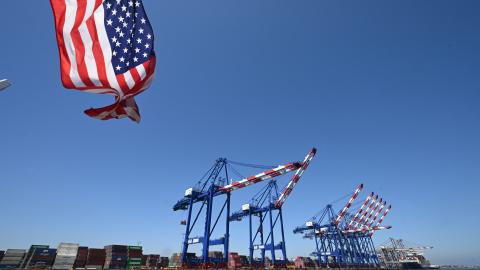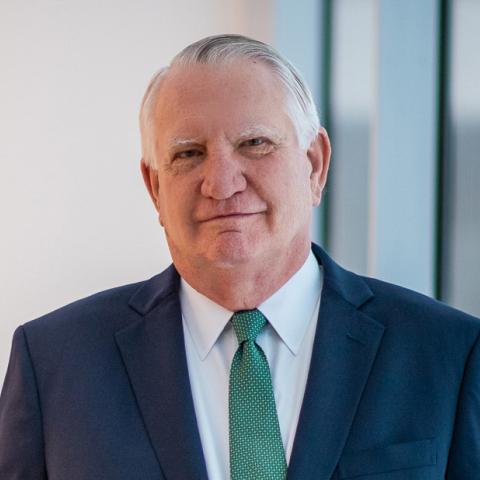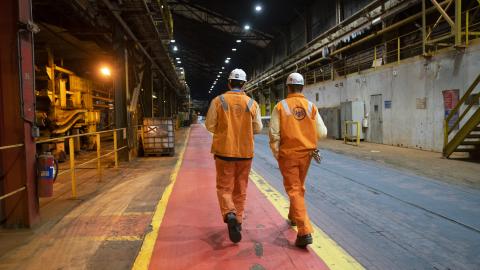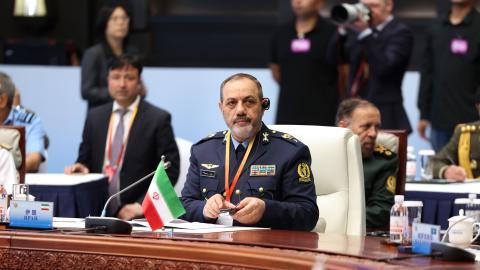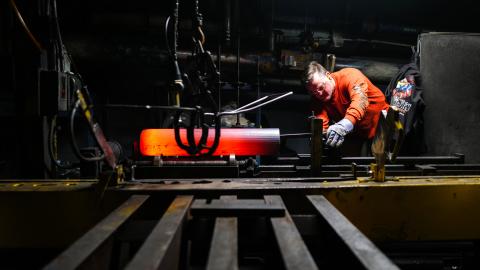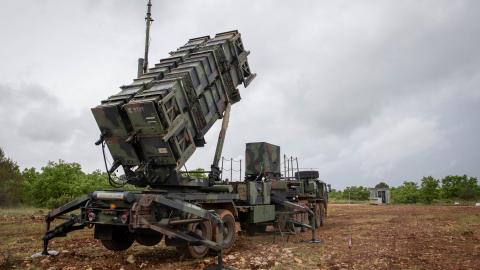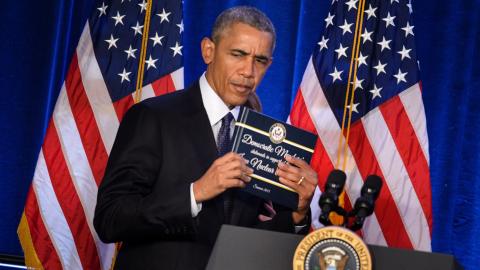“The Iran Deal was one of the worst and most one-sided transactions the United States has ever entered into,” President Donald Trump declared in 2018 as he withdrew from the Joint Comprehensive Plan of Action. He has always claimed that President Barack Obama’s nuclear agreement was terrible. And he has always been right.
But if Trump lets Steve Witkoff, his special envoy, continue to negotiate with Iran along the current lines, he will end up with an agreement even weaker than the JCPOA. Witkoff is driving Trump on the road to Obamaland.
To understand why and how, we have to go back to the beginning of this journey.
It begins with the visit of Israeli prime minister Benjamin Netanyahu to the White House on February 4. As the first foreign leader to meet President Trump after his inauguration, Netanyahu arrived with a bold proposal. Over the course of 2024, Israel’s military had decimated Hezbollah, crushed Hamas, and destroyed Iran’s air defenses and missile fuel facilities. Iran’s nuclear weapons program stood naked and exposed.
Behind closed doors, Netanyahu urged Trump to help him “finish the job.” (A few weeks later, he reiterated that message publicly while standing next to Secretary of State Marco Rubio, who was visiting Israel.) During a press conference with Netanyahu on February 4, Trump agreed that “Iran cannot have a nuclear weapon.” Privately, he told the prime minister that he first wanted to try to negotiate—but from a position of strength.
To pressure Iran, Trump had already reinstated the “maximum pressure” policy from his first term. On his first full day in office, he signed an executive order targeting Iran’s oil exports, central bank, and Revolutionary Guard Corps, aiming to reduce oil revenues by over 50 percent and restrict financial transactions.
Then, on March 5, Trump sent a letter to Supreme Leader Ayatollah Ali Khamenei proposing talks, setting a two-month deadline that, if unmet, would trigger military action. “If they don’t make a deal, there will be bombing, and it will be bombing the likes of which they have never seen before,” Trump said in an interview on March 30. The American military targeted the Iran-backed Houthis with air strikes on March 15 and March 22, hitting missile launch sites, radar systems, and command centers in Yemen.
Trump tweeted that Iran would be held accountable for Houthi violence, while he moved military assets to the region like the aircraft carrier USS Carl Vinson and B-2 bombers, capable of penetrating hardened sites like Fordow, an underground uranium enrichment facility near Qom, built deep within a mountain to resist air strikes.
Israel, for its part, supported Trump’s policy but also subtly pressured the president to produce results by working with General Michael Kurilla, the head of U.S. Central Command, to develop options for an attack in early May. The options included Israeli air strikes and commando raids on nuclear sites. They also envisioned U.S. assistance with B-2 bombers carrying 30,000-pound bunker-busting bombs capable of penetrating Fordow’s defenses.
Inside the Trump administration, a debate unfolded. On one side, National Security Adviser Mike Waltz, a former Green Beret, sided with Israel and General Kurilla. He pushed for a policy of total elimination of Iran’s nuclear capabilities, telling CBS that Trump would demand a “full dismantlement” of the nuclear program, including addressing its ballistic missile capabilities, which produce delivery systems for nuclear warheads.
On the other side, Director of National Intelligence Tulsi Gabbard, among others, cautioned against a military strike. Outside the government, Tucker Carlson, a commentator close to the administration and supportive of the Gabbard position, tweeted on March 17 that war with Iran “will almost certainly result in thousands of American deaths at bases throughout the Middle East.”
On April 7, Trump met with Netanyahu at the White House and told him that negotiations would start. Subsequently, The New York Times reported that Trump had “waved off” Israel from striking Iran. Unnamed officials leaked to the paper details of Israel’s plan, which included a combination of air strikes and commando raids targeting key nuclear sites. The leakers, presumably, sought to support the Gabbard-Carlson position by framing Israel as an obstacle to Trump’s diplomacy and by revealing to Iran key elements of Israel’s plan.
Speaking to reporters on April 17, Trump explained that he had delayed—not canceled—an attack led by Israel. “I’m not in a rush to do it, because I think that Iran has a chance to have a great country. And to live happily without death.” Negotiations, he explained, were his first option; military action his second. “But Iran can’t have a nuclear weapon. . . . It’s really simple.”
Enter Witkoff, a longtime friend of Trump’s and a fellow real estate developer. The president appointed him as special envoy because he values Witkoff’s negotiation experience and loyalty over traditional diplomatic expertise. Witkoff met with Iranian foreign minister Abbas Araghchi on April 12 in Muscat, Oman, and again on April 19 in Rome, Italy. A third round is now scheduled, again in Muscat, to take place on April 26.
Witkoff began cautiously, agreeing to Iran’s demand for proximity talks—a format where parties negotiate indirectly, in this case through Omani diplomats, including Foreign Minister Sayyid Badr Albusaidi. The format itself exudes open contempt for America. It respects a key red line established by Ayatollah Khamenei, who has repeatedly depicted direct negotiations as “dishonorable.”
After the first meeting, Witkoff gave an interview on April 14, stressing that his goal was to ensure Iran’s uranium enrichment would be capped at 3.67 percent for civilian use and verified.
This approach obviously contradicted Waltz’s claim that the administration demanded zero enrichment and the complete elimination of Iran’s nuclear program.
In response to criticism, Witkoff appeared to backtrack, writing on X the next day that Iran must “stop and eliminate” its program. But the atmosphere around the Rome talks a week later suggested that the backtracking was more rhetorical than substantive. Once again, Witkoff respected Iran’s demand for proximity talks, indulging Khamenei in his view that speaking directly to Americans is beneath Iran’s dignity. Moreover, Foreign Minister Araghchi welcomed the special envoy’s approach to the negotiations, stating on April 19, 2025, that a “relatively positive atmosphere in Rome has enabled progress.”
Araghchi could not issue such a statement if Witkoff were not working inside Khamenei’s famous “red lines.” These restrictions include, among others: no permanent limitations on the nuclear program; no destruction of centrifuges; no inspections of military sites suspected of weapons work; no discussion of ballistic missiles; and no denial of Iran’s “right to enrich,” its right to control the entire fuel cycle. A discussion about capping enrichment at 3.67 percent falls within Khamenei’s red lines. A demand by Witkoff for Iran to “stop and eliminate” its program would not lead Araghchi to praise the American’s constructive attitude.
The stark truth is this: Khamenei’s red lines render Trump’s stated goal unreachable. Iran’s nuclear program has surged since the 2015 JCPOA, making true elimination through negotiations impossible.
Iran now has a zero-breakout time: the duration of time required to produce sufficient material for a nuclear weapon. This is the sobering news coming from the Institute for Science and International Security (ISIS), widely regarded as one of the most authoritative and credible organizations monitoring Iran’s nuclear program. ISIS estimates that in less than a week Iran could convert enough of its 275 kilograms of 60 percent highly enriched uranium (HEU) into weapons-grade uranium (WGU) to produce a nuclear weapon.
But merely reducing those stockpiles will not eliminate the threat. In the last year and a half, Iran has doubled its number of advanced centrifuges. In November 2023, it had 6,277 advanced centrifuges at its Natanz and Fordow facilities, and by mid-February 2025, this figure had increased to 13,355, including 1,660 IR-6 centrifuges at Fordow, the facility shielded under a mountain. If Witkoff succeeds in capping Iran’s uranium enrichment at 3.67 percent, he will have achieved very little. The substantial number of IR-6 centrifuges—Iran’s most advanced machines—at Fordow enables it to produce significant quantities of weapons-grade uranium (90 percent enriched) very rapidly. This means that an enrichment cap at 3.67 percent does not substantially extend Iran’s breakout time. Consequently, these developments render Witkoff’s compromise-oriented approach insufficient to achieve the complete elimination of Iran’s nuclear capabilities as envisioned by Waltz.
ISIS also reports that Iran has also resumed weaponization activities, including computer modeling for nuclear explosions, with a secret team exploring how to create a “crude” nuclear weapon within months rather than years. Iran’s obstruction of International Atomic Energy Agency (IAEA) investigations and production of unmonitored centrifuges have raised fears among nuclear experts of a covert enrichment plant.
If Witkoff is to reverse these advancements, he would have to require Iran, among other things: 1) to destroy enrichment infrastructure; 2) declare and destroy weaponization facilities; 3) and allow intrusive inspections.
He must, in other words, wrest from Ayatollah Khamenei concessions that the Supreme Leader has consistently equated with national suicide.
Suppose Witkoff continues working within Khamenei’s red lines. What, then, is the best that he can achieve? He can allow it to retain a civilian program that can be militarized very quickly. He can cap enrichment at 3.67 percent by turning off some advanced centrifuges, down-blending or exporting the 60 percent HEU, and reinstating limited inspections of declared sites. All these restrictions would be temporary, expiring on the date that Witkoff and Araghchi agreed on.
In return, Trump would offer sanctions relief, delivering countless billions of dollars to Iranian coffers. Iran, in the meantime, will benefit from the permanent erasure of JCPOA snapback sanctions, set to expire in October 2025, reducing U.S. leverage further. Iran’s Revolutionary Guard Corps will use the revenues to support its regional proxies, such as Hezbollah, Hamas, and the Houthis, whom it will arm with missiles and drones that will not be restricted by the deal—because “no negotiations over proxies” is another Khamenei red line.
This new deal will preserve Iran’s latent nuclear weapons capabilities—centrifuges, scientific expertise, and unmonitored sites—that will facilitate a simple reconstitution in the future. These capabilities are far more potent today than they were in 2015, with Iran’s advances making them easier to reactivate, a significant step back from the JCPOA’s constraints.
The direction of Witkoff’s diplomacy has no doubt disappointed Israel. Officials in Jerusalem, however, have remained uncharacteristically mum. Why? Because Trump, a friend of Israel, has asked them to wait to see if he can negotiate an end to Iran’s program. He has, in addition, offered major support on Gaza by lifting the de facto arms embargo that President Biden imposed.
But Israel’s silence masks deep frustration with a deal that fails to eliminate Iran’s nuclear threat.
If Trump opts for the deal that is in the works, Netanyahu will have no choice but to respond, but his options are limited. A unilateral military strike, like the planned May 2025 operation, is unlikely without Trump’s backing, as Israel needs U.S. aircraft and missile defenses to counter Iran’s retaliation with drones, ballistic missiles, and cruise missiles—a counterattack Israel cannot fend off alone.
Covert action, drawing on Israel’s history of sabotage like the 2024 beeper explosions that crippled Hezbollah, is plausible but unattractive. Israel might plant explosives in equipment at Natanz or Fordow, or target scientists. Such operations, however, won’t eliminate the program. Fordow’s hardened fortifications and Iran’s expertise would endure. Iran could retaliate by expelling IAEA inspectors or accelerating covert enrichment. It might race for a bomb. Given these risks and the potential to irk Trump, Israel will hesitate and deliberate long and hard before acting.
By defanging Iran’s proxies and destroying its defenses, Israel stripped Tehran naked, creating a historic opportunity to end forever the threat of its nuclear weapons program. But Tehran’s weakness also convinced it to enter the kind of negotiations at which it excels. Israel’s battlefield victories, therefore, facilitated a deal that will place Iran’s nuclear program under an undeclared but very real American protective shield.
The irony doesn’t stop there. That shield today will expose the U.S. tomorrow to security risks from a resurgent Iran. From its military heights, Israel gazes down on something it never expected to see on Trump’s watch: Obamaland.
